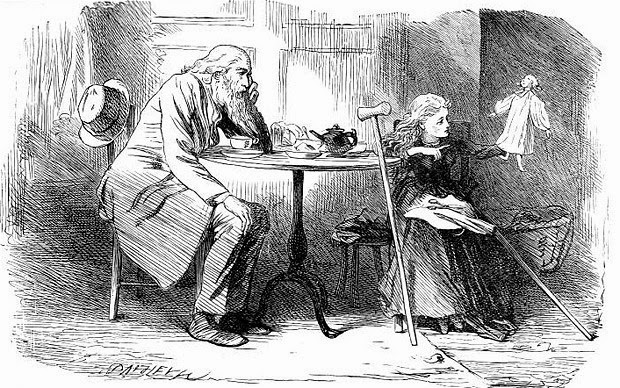A Manifesto for Beauty
I don't find too many references for lipstick in literature, though there are often references to make-up, nail varnish and coquetry in general. In Tad Williams's The Dragonbone Chair, the fantasy world of Osten Ard has no lipstick but lip-paint, applied by the lady Vorzheva with a lip-brush.Coquetry fares so and so in literature. In classic novels, coquettes get a bad press, though in Victorian era novels the coquettish girl is often used as the carrier of serious themes -- choice in marriage, failed marriage, marital abuse, and a woman's right to sexuality.
Some writers have wisely created coquettes who are also central and interesting characters in their own right -- see Bela and Ada in Charles Dickens's Our Mutual Friend and Bleak House respectively, lovely Dora in David Copperfield, Rosamond in George Eliot's Middlemarch, Rosalie Murray in Anne Bronte's otherwise dull novel Agnes Grey and, the coquettish character par excellence, the inimitable Ginevra Fanshawe in Charlotte Bronte's Villette.
In popular literature I am sorry to say that the coquette fares badly. She is usually a step towards the male protagonist's road to maturity-- he must learn not to appreciate pretty, sexy and usually blonde girls before he can move to the serious and sultry "real" heroine. This only continues the distinction between woman the beautiful and woman the useful/clever, a false distinction used by men to create prejudice against women, especially beautiful women.
I think that beauty is every woman's right and a source of happiness for women. I think that you can look both beautiful/sexy and clever. I have four university degrees, including a PhD, and I take care of my beauty as much as I possibly can. When I gave a public speech about a month ago, I went to my beautician to give me a professional make-up. When/If I ever have more money, I will spend more on beauty.
Okay, we cannot all look like Scarlett Johansson or Beyonce, or Diane Kruger who is so beautiful she even advertises a perfume called, um, Beauty...
... and who also played Helen of Troy in the film Troy. We cannot all look like this, and should not be made to think that we should all look like this! But we can all look good, confident, energetic and strong. This is beauty and sexiness, or its personal equivalent!
Finally, I wouldn't mind if men followed my advice. This entry is not only about women.
Though I think men can skip the make-up bit. But only if they want to...





















































